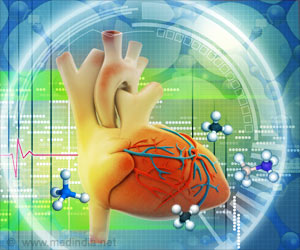A new microfluidic chip that mimics the cross-section of the arterial wall is used to study the effect of oxidative stress on blood vessels. This is usually caused by high cholesterol accumulation and inflammation. Oxidative stress occurs when there is imbalance of free radicals and antioxidants. The free radicals are produced during the metabolic process and antioxidants protect the cells and tissues from getting neutralized by the free radicals.
‘The effects of oxidative stress on heart can be studied using the 3D model.’
The model also helps to study arthrosclerosis, where the cholesterol and inflammatory cells form plaque on the blood vessel and constricts the blood flow leading to cardiovascular diseases. In the study two compounds; Vitamin D and metformin were seen to prevent smooth cell migration and inflammation.
The study found that as oxidative stress increases the smooth muscles that are found in the middle layer of the arteries move inward and cause inflammation on the inner layer of the artery.
According to Assoc Prof Dalan “Despite significant advances in treatment, the mortality and morbidity associated with atherosclerosis remain high. There is an unmet need to understand the disease mechanisms and processes of atherosclerosis in a typical patient who is suffering from multiple diseases, such as diabetes and high blood pressure. “The development of this “arterial wall-on-a-chip” enables us to study the process of atherosclerosis under various conditions as well as the possible impact of therapeutics and drug combinations, which will have wide applications.”
Researchers say that the 3D model validates novel treatment target to prevent plaque formation and improves the health outcome in patients.
Source: Medindia



